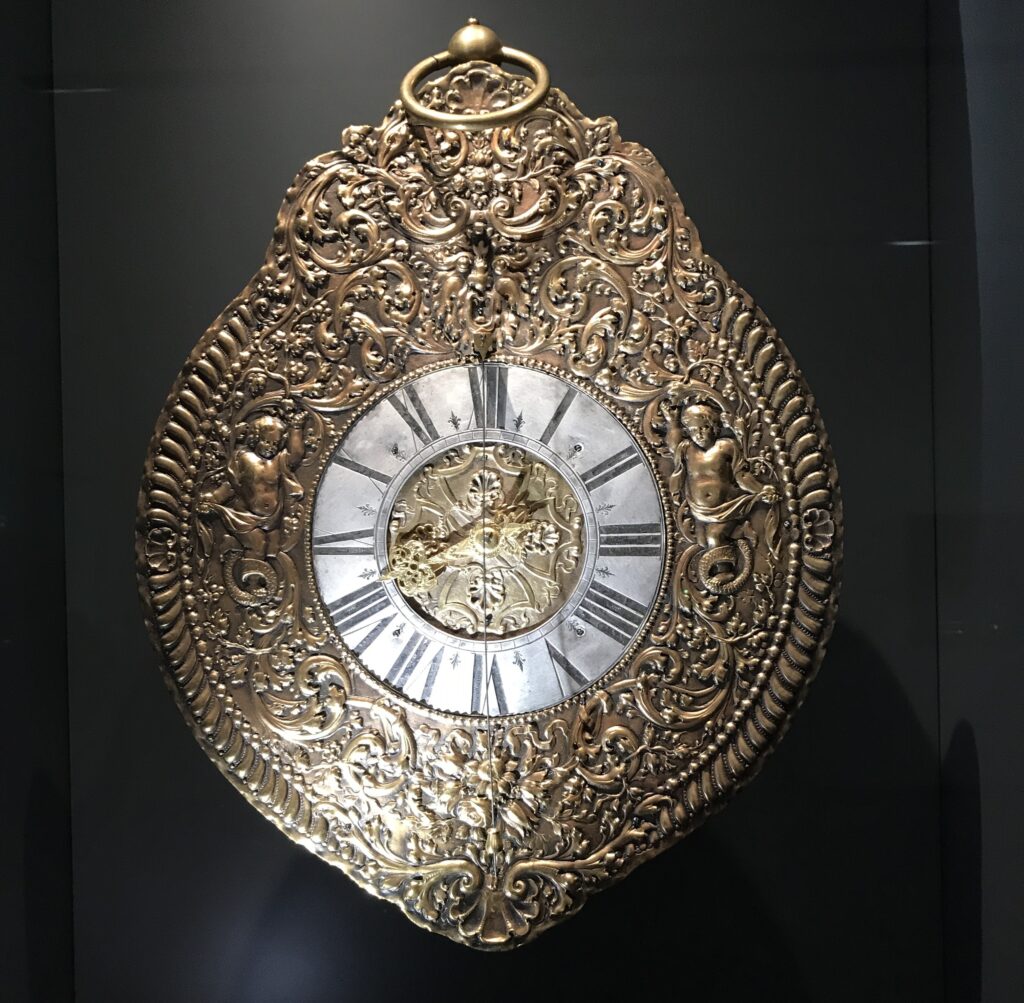Listen to Brenda tell the story
Many things we take for granted as everyday objects were once the source of competition so fierce, it led to violence and death. Competing railroad companies in the American West were known to tear up the other guy’s tracks overnight. But who would think that rival watchmakers would stop at nothing to preserve their market?
Nowadays, shady corporate tactics involve hiring teams of unscrupulous lawyers and fine print, but in the Middle Ages, you could team up with Sweden to massacre an entire city. Those were the good old days.
In this case, we’re talking about Augsburg and Friedberg. Augsburg was an important metropolis, back when Munich was just a collection of monasteries whose monks spent their time seeing who brewed the best beer. Augsburg was rich, stemming in no small part from its location on the lucrative trade route from northern Italy dating back to Roman times. They dealt in such lucrative commodities as salt. Thus when watches started becoming more widespread, Augsburg was both a good market for them and ideal for manufacturing them, too.
But the profession was restricted by the guilds. Becoming a watchmaker required taking a difficult exam, administered just once a year. So many people clamored to enter this lucrative occupation that lots were drawn to decide who would be admitted to the exam. The result: many who were qualified were excluded.
The ruling Wittelsbacher family in Friedberg in neighboring Bavaria saw an opening.
In centuries predating modern Germany, the town of Friedberg was located right on the border between Bavaria, the free city of Augsburg, and the state of Swabia, a constant source of conflict. It was always dwarfed by Augsburg, but they still managed to collect some tax on the salt on its way to the neighboring metropolis.
But this new watchmaking thing offered an intriguing new opportunity. Could Friedberg somehow capitalize on this?
“Yes, we can,” said the enterprising Bavarians of Friedberg.
Thus Friedberg founded its own watchmaking business. Entire families were involved in the process, and the watches produced here became famous throughout Europe.
And that exam? Much too stringent, said the rulers of Friedberg, and relaxed the exam requirements. So it came about that qualified watchmakers from Augsburg who had been excluded from the profession relocated to Friedberg.
Augsburg was not amused.
The Protestant citizens of Augsburg banded together with the invading – and also Protestant – Swedes in the 30 Years’ War to completely destroy their Catholic competitor, Friedberg. Its name, incidentally, means “peace mountain,” but it was not enough to stop the marauders. In 1632, they burned the city to the ground. The city remained a ghost town until the Swedes finally left, three years later.
That gives the idea of predatory competition a whole new intensity. Of course, those were also the days when religion was used as an excuse to do whatever you felt like doing, which usually involved invading other countries, imprisoning political enemies, torture, or all of the above.
Friedberg was eventually rebuilt. After the reconstruction of the Town Hall following its destruction during the 30 Years’ War, the watchmaking trade was practiced by 350 watchmakers.
By the late 1700s, the competition between Augsburg and Friedberg was being dwarfed by much larger cities abroad. Owning a watch from Paris and London was very prestigious. The industrious Friedberg watchmakers saw no problem with this. They could engrave “Paris” or “London” on their watches, too, which they did.
Kind of like that Gucci handbag you bought from that fast-talking guy on the piazza in Italy on your last vacation. Looks the same, right? So long as nobody knows where it came from, it fulfills its purpose.
Visiting the towns of Augsburg and Friedberg today, you would never guess the bitter, deadly rivalry that marked their historic relationship. Camera-toting tourists stroll along charming cobblestone roads and enjoy the quiet atmosphere of historic buildings and museums.
The castle museum in Friedberg is full of more kinds of clocks than you ever knew existed, designed to fit any gentleman’s lady’s neck and add grace to any lacquered cabinet or palace fireplace. Now they are the prized possessions of museums, like this one in the Metropolitan Museum of Art in New York.
Brenda Arnold
Also interesting:
The 100 meters between fascism and democracy in Munich
Kraut and about – what are all those Germans doing abroad?
Linguistic sleight of hand – bilingualism at any cost

I must say, this is one of the best posts I’ve read on this topic. Your attention to detail and the thorough research is evident. It’s refreshing to see such well-thought-out content. Thanks for making a valuable contribution to the discussion!
Thank you, Jessica, glad you enjoyed it!
love your explorations of the insanity throughout history lol xxxx
Thank you, Sylvia! It’s amazing what you find when you dig a little deeper into the past!